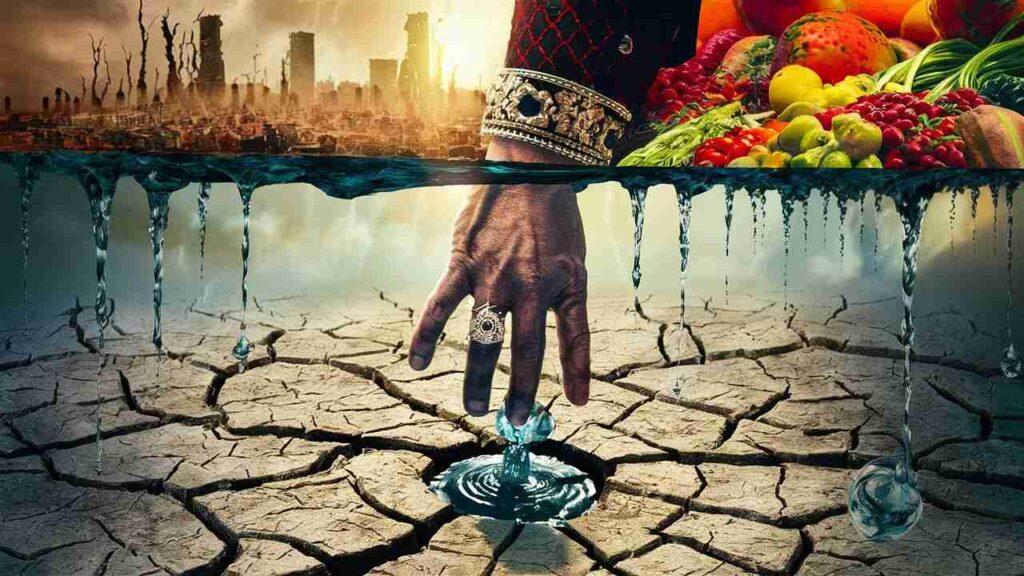A significant issue arises in the plan, and it’s not a small one; it’s a substantial gap in our calculations with Earth-sized implications. To meet the escalating global demand for food, crop production must increase by at least 50% by 2050.
While this seems achievable due to advancements in crop breeding, various other challenges loom. Amid concerns like heat impacts, soil degradation, and plant diseases, one major obstacle emerges: water scarcity.
A 2017 study presented a daunting prospect—fulfilling the necessary crop production would require a 146% increase in irrigation water by mid-century. The catch? Water resources are already stretched to their limits.

Dry regions are getting even drier due to reduced rainfall, declining river flow from melting ice, and rising temperatures causing rapid evaporation. “Flash droughts” threaten major growing regions, leading to permanent shifts to drier states, as seen in the prolonged drought in the US Southwest. Agriculture is a major culprit, consuming a staggering 90% of the world’s freshwater, exacerbating the crisis.
While the 2017 warning fell on deaf ears, recent droughts in Catalonia and Andalusia have drawn attention. However, the global scale of this crisis remains largely ignored by policymakers and the media.
The catchment of the Indus River, shared by nuclear powers India, Pakistan, and China, faces a precarious situation. With 95% of the river’s dry season flow already extracted for irrigation, increasing water demand in the region, coupled with declining supply from melting glaciers, poses a severe and imminent threat.
